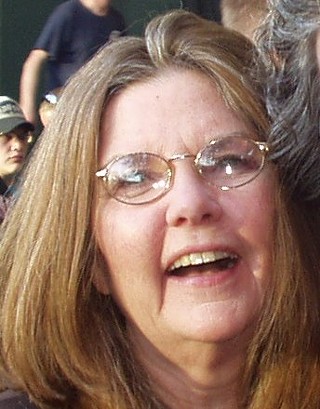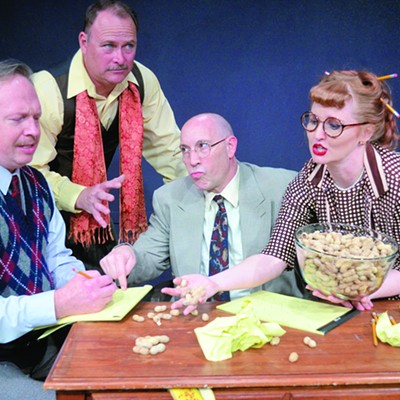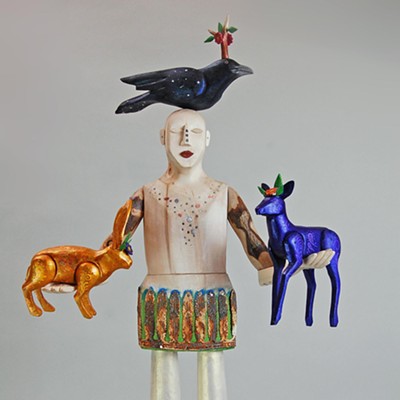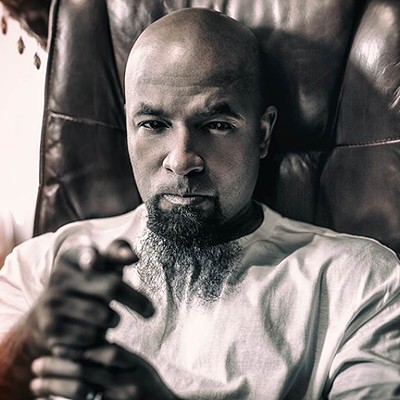If you play Dengue Fever's "The Deepest Lake on the Planet" (For the record, that would be Siberia's Lake Baikal, 25 million years old and threatened) on an off-brand .mp3 player with your crappiest ear buds, you might get an idea of how something like that could sound coming from the radio of a decrepit truck, bumping along a rural dirt road, on a hitchhike with a driver who doesn't speak your language. It could be the Border Radio of Southeast Asia.
The song, dreamy and layered, mildly psychedelic with a simple rap over the bridge, is beautiful in real life with the good cans, but it echoes the experience that seeded this ultimately pleasing rock-world mash-up of a Cambodian sound, and rooted it in a West Coast surf outfit via Detroit and the Aristotelian ideal of a '70s Best Western lounge act—in a good way. Take the saxophone as a giveaway; it conveys a whiff of ska attitude, but grown up and global.
As bassist Senon Williams (Radar Brothers) tells the tale in a phone interview, "I travelled (to Cambodia) in 1995 and collected all kinds of things, Cambodian music. Ethan was there in 1998 and he was turned onto the music by a truck driver they were hitching a ride with on the Cambodian countryside.
"The Cambodians had turned on to '60s and '70s psychedelic music and soul music during the Vietnam War. American soldiers over there had high-powered radio in certain places. So Cambodians took that music and made a hybrid. It's completely familiar, but completely foreign at the same time."
That music survived, hidden from the Khmer Rouge, whose reign of genocide and cultural annihilation mostly ended in 1979, but left Cambodia in chaos through the 1980s. As tapes began to surface from secret caches, a new generation learned the American-pop/trad-Cambodian mash-up that had made national heroes of, e.g, Sinn Sisamouth, Ros Sereysothea and Pen Ran.
Among millions of victims in the long tail of the Khmer Rouge was Chhom Nimol. "Nimol lived with her family in a refugee camp (in Thailand) from the age of 3 to 12," Williams says, "so for nine years she lived in a thatched hut with no electricity." Later, back in Cambodia, she became a famous karaoke singer in the birdlike Cambodian tradition. "She sang for supper clubs and eventually started performing on TV," Williams says. "Then she got a sponsorship to move to the U.S. and sing in an L.A. nightclub. She was meant to come for six months and she ended up never going back." (Cue Homeland Security anxiety, here.)
Long-time friends and fellow players on the L.A music scene, Williams, keyboardist Holtzman and his brother Zac, a guitarist and vocalist, plus drummer Paul Smith and saxophonist David Ralicke (Beck/Brazzaville) formed a band in 2002 specifically to perform music like they'd heard in Cambodia and on their bootlegged tapes. But they found a central element lacking: a vocalist in the Khmer tradition. They combed the night clubs of Little Cambodia, the mile-long swath of Long Beach that boasts one of the largest populations of Cambodians in the world, and eventually found Chhom Nimol.
When they pitched their concept, she was skeptical. "We were outsiders, there," Williams says. "Her sister didn't trust us. Every time she came to rehearsal, she would have a small entourage." And she didn't speak English.
The fledgling band nearly died aborning when Nimol, having been arrested and spent a month in jail, came under threat of deportation. "The band raised a bunch of money," Williams says. "Also she performed at a Cambodian club called Dragon House, and they raised a bunch of money. We hired a lawyer for her who somehow figured out how to get her a stay. In October last year she got her citizenship."
The band's first release, in 2002, was easy enough for Nimol to buy into. It was covers of the greatest hits of Cambodian-infused American-ish music. But the sophomore release, in 2004, found them on their own, writing songs, having them translated, turning them over to Nimol for stylistic touches and, as Williams says, "to figure out how to carry the spirit of the song lyrically." By 2005 they felt ready to tour. They headed to Cambodia.
"It's wild," Williams says. "The first concert we played there (in 2005) was in this old Victorian-looking home, French colonial, right on the Tonlé Sap river. It drops so the whole floor was like a steep angle, like a 15 degree angle. We could see the river through the planks on the floor, and there's like 200 people, everybody jumping, everybody slipping.
"And at that time, all the Cambodians thought Nimal was coming back with a Hollywood band. That the music she would be singing would be like Mariah Carey or Madonna or Celine Dion, and all of a sudden we started playing clave and stretch grooves, and they're blown away that she's singing in Khmer and not in English."
Four albums on, Dengue Fever has critical acclaim, film and TV credits and its own record label, home of its 2014 release, "The Deepest Lake." It's the band's most ambitious collection, featuring color by both Cambodian and African traditional instruments, several Latin-infused arrangements, some rap, and some tracks in which the Khmer is tempered a bit by more Western phrasing. "Rom Say Sok", with hints of Men at Work and The Cars, will teach us Khmer with its infectious chorus. "Vacant Lot" opens with a tribute to the "Day Tripper" guitar riff, leading into flute and keyboard parts to charm a snake. "Still Waters Run Deep" is a quick-hearted spy thriller with a tribute to the defining hook of the "Mission Impossible" theme.
The release also includes the first of Nimol's own composition to be recorded, the very lively opening track, "Tokay." Williams says "Our first album, she didn't speak English, and she didn't understand that we were trying to do a new thing. So it took three or four years for her to finally click and go, 'Oh! We're creating our own music. We're telling our own story."












